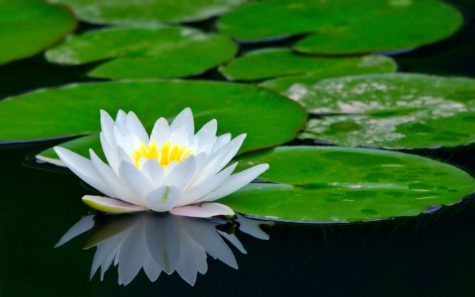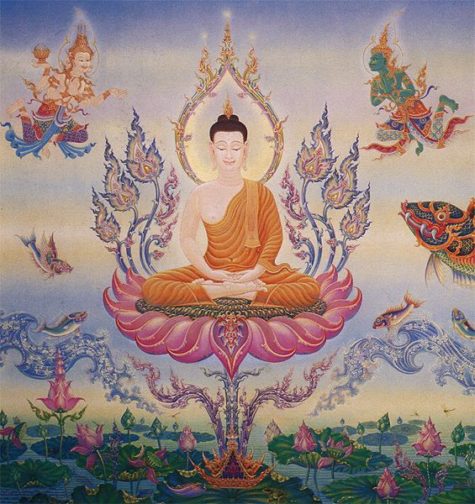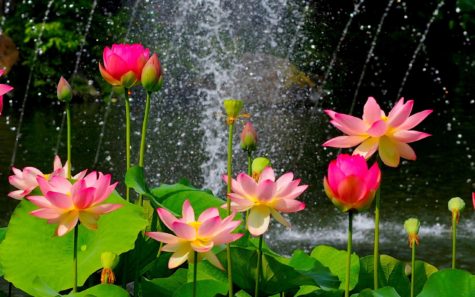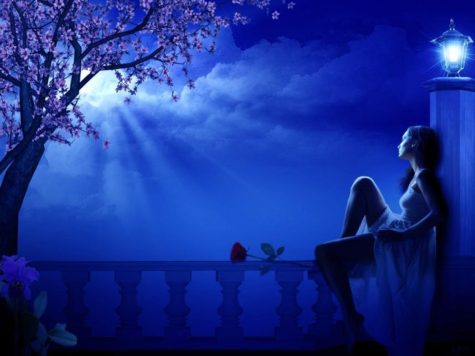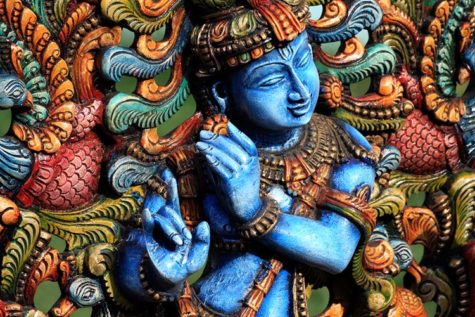Mountain
Lotus
The lotus is arguably one of the most important flower symbols on the planet, along with the lily and the rose. Both the otherworldly appearance of the flower and its growing circumstances make it obvious that the flower is very special. It’s therefore no surprise that the flower is one of the eight auspicious symbols in both Chinese and Tibetan Buddhist iconography.
This sensuous and extraordinary flower, with its perfect petals, rises imperiously from muddy swamps, its head above the dirty water. The symbolism applied by generations of Egyptian, Indian, and Chinese sages is obvious. First, the flower rises in complete perfection from the murky primal waters of creation. Next, the flower comes from the darkness into the light, woken by the Sun. Third, the lotus symbolizes the triumph of spirit over matter and is a metaphor for the journey to enlightenment.
Ancient Egyptians used the plant extensively as a symbol in the paintings and carvings left on the walls of temples and tombs.
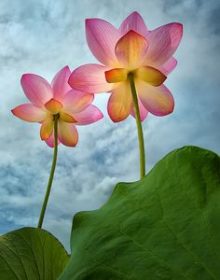 Because the lotus appears to retreat back into the water during the hours of darkness only to rise again above the surface of the water at dawn, the Egyptians saw it as a symbol of death and rebirth. It is now known the plant simply loses old blooms and adds new ones on a daily cycle, but it is still a potent reminder of reincarnation and the mysteries of the afterlife.
Because the lotus appears to retreat back into the water during the hours of darkness only to rise again above the surface of the water at dawn, the Egyptians saw it as a symbol of death and rebirth. It is now known the plant simply loses old blooms and adds new ones on a daily cycle, but it is still a potent reminder of reincarnation and the mysteries of the afterlife.
Priests and other religious leaders also brewed the flowers to make a tea with sedative and mild psychotropic effects, which heightened their sense for ritual work.
The tight bud of the flower is a symbol for the Universe. The flower is also an archetypal symbol for the vulva, and so is associated with the Goddess.
In all cultures the lotus carries within it a reminder of the elements. It has its seed within the earth; it grows in water; the blossom exists in air which also carries its fragrance; and the flower itself is awoken by the Sun, and therefore the element of fire which it also resembles, the curious central circle surrounded by the rays of petals.
In addition, the lotus has eight petals, symbolizing the four cardinal directions and the four intercardinal directions, as well as the rulers of the eight directions of the Universe, or Ashtadikpalas.
Buddhist studies use the lotus flower in guided meditations. The meditation instructs practitioners to imagine themselves as a tiny lotus seed that is deeply buried in the mud. While the mud is dirty and uncomfortable, the seed’s journey is to move calmly through the darkness and into the light. Once the seed completes the journey, it blossoms into the next stage of life. The lotus symbolizes growth and determination.
The Buddhist Lotus represents:
- Patience
- Purity
- Mysticism
- Direct Spiritual Contact
- Emptiness from Desire
- Victory over Attachments
- Enlightenment and the Bodhi State
- Love and Compassion for All Things
- Self-Awareness
- Faithfulness During Spiritual Development
- Rising Out of Suffering
These deep spiritual meanings gave rise to a way of sitting known as the Lotus position. The legs are crossed and tucked in a way that makes the bent knees look like the petals of a lotus. It is an important position in both Buddhist meditation and Hindu yoga practices. The soles of the feet are tucked away, which makes it a respectful position to sit in when visiting a temple where exposing the bottom of your feet is considered rude.
The lotus is also commonly depicted in mandalas, which are spiritual and artistic representations of divine energies and meditation aids in Buddhist traditions. The symbol of the lotus is often partially hidden in the traditional mandala, the petals forming a border that is both symbolic and decorative. The Buddha sits in the center of the eight-petaled lotus, detached from the material world with its cycle of death and rebirth.
In Hindu iconography, the lotus is seen as the base of the earth from which the holy mountains (such as Kailash and Meru) rise. The stalk of the flower is associated with the world axis which rises up through this sacred mountain.
The lotus is used as a symbol for each of the chakras, the number of petals relating to the role and function of each of these energy centers that are situated along the spine and that are said to unfurl like petals with exercise and meditation.
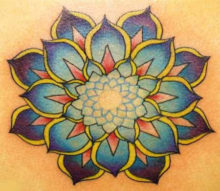 The lotus flower is a popular design for tattoos and art, as it is a daily reminder that perseverance and inner strength results in light and beauty. Getting a Lotus flower tattoo is a beautiful way to show your dedication to a Hindu or Buddhist faith. It is also a reminder to stay humble and focus on developing inner peace.
The lotus flower is a popular design for tattoos and art, as it is a daily reminder that perseverance and inner strength results in light and beauty. Getting a Lotus flower tattoo is a beautiful way to show your dedication to a Hindu or Buddhist faith. It is also a reminder to stay humble and focus on developing inner peace.
You can also develop more balance in your life with a tattoo of this flower because the eight petals represent all eight parts of a spiritual path. A lotus sends a message of gracefulness and love to everyone that sees it.
The colors of the lotus are also significant.
The sacred lotus is pink or white, and is a large flower whose petals can reach up to half a meter in diameter. Also known as the Indian or Oriental Lotus, every part of this plant is edible, and the sugared seeds are a treat during various festivals.
The red lotus is the ultimate symbol of the Sun and is the emblem of India.
The lotus depicted in stylized form in Egyptian friezes is the blue lotus, actually a form of water lily rather than a true lotus. As well as its ethereal color, this lotus contains a psychotropic substance called apomorphine, which no doubt contributes to its status as a sacred flower. The lotus eaters of Greek mythology, immortalized in Tennyson’s poem, “Song of the Lotus Eaters,” lived in a state of hedonistic bliss brought about by eating the seeds of this blue flower.
The white lotus flower and pink lotus flower from the Nelumbo family are seen as meaning purity and devotion. More passionately colored red, purple, and blue Lotus flower blooms can take on a spiritual meaning of ascension, enlightenment, or rebirth. A green Lotus flower is a beautiful gift for anyone trying to improve their life and start good habits.
According to the Language of Flowers, sometimes called florigraphy, a Victorian-era means of communication in which flowers and floral arrangements were used to send coded messages, allowing individuals to express feelings which otherwise could not be spoken, lotus flowers have the following meanings:
- Lotus (General) – Purity, Chastity, Eloquence, Forgetful of the past.
- Lotus (Flower) – Estranged love.
- Lotus (Leaf) – Recantation
Blue
 Symbolic meanings of the color Blue:
Symbolic meanings of the color Blue:
- Truth and the Intellect
- Wisdom
- Loyalty
- Chastity
- Peace
- Piety and Contemplation
- Spirituality
- Eternity
Blue is the color of the Heavens and is related to the fifth Chakra. Blue is traditionally worn by the Virgin Mary, the very embodiment of all the qualities described above. Whereas the reds, oranges and yellows carry with them a carnival atmosphere, blue is more sober, even somber despite its many variations.
If we’re “feeling blue” then we’re depressed or melancholy. And yet the bluebird is a universal symbol for happiness. The color has even given its name to a rich vein of music. The “blues” actually refers to “blue notes.” These are notes, either sung or played, that are pitched down a little for expressive purposes. An example is Billie Holiday’s heartbreaking rendition of “Strange Fruit.”
There’s something cool and detached about blue that gives rise to its reputation for spirituality and chastity. Above all blue is the color of the sky. Like the sky, blue is infinitely spacious. It contains everything, and yet contains nothing. The color is therefore associated with ideas of eternity.
In Jewish tradition the city of Luz, where the Immortals live, is also called The Blue City. Similarly, the mythical sacred mountain of the Hindus, Mount Meru, is constructed entirely of sapphire on its southern face and it’s this that is said to tinge the skies with blue.
To put any color out of context can have an alienating and often frightening effect. Knowing this, early British warriors daubed themselves in woad. These blue-skinned savages must have been an alarming sight for Roman soldiers.
To do something “once in a blue moon” is to do it very rarely. The phrase refers to the appearance of a second full moon within a calendar month, which actually happens about every thirty-two months.
Members of the aristocracy or the royalty are described as having “blue blood,” but why? The phrase originated with the Spanish, sangre azul, and refers to the pale-skinned Castilian ruling classes who prided themselves on never having interbred with darker-skinned races. Therefore, their blue veinous blood was plainly visible underneath the surface of their skin. There’s even a particular shade of blue that is meant to represent this color, called Royal Blue.
Blue is one aspect of the Hindu legend of Krishna that has remain unchanged through time and geography. We look at what this “blue magic” is all about, and why even Krishna’s sworn enemies were irresistibly drawn to it.
Blue is the color of all-inclusiveness. You will see in the existence, anything that is vast and beyond your perception generally tends to be blue, whether it is the ocean or the sky. Anything which is larger than your perception tends to be blue because blue is the basis of all-inclusiveness. It is based on this that so many gods in India are shown as blue-skinned. Shiva has a blue skin, Krishna has a blue skin, Rama has a blue skin. It is not that their skin was blue. They were referred to as blue gods because they had a blue aura.
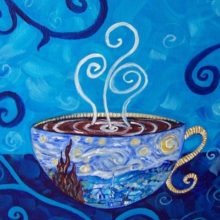 Other meanings associated with the color blue:
Other meanings associated with the color blue:
- Navy blue and white, when used together, often represents sailing, and sailors.
- The saying “out of the blue” is used in reference to something unexpected.
- The expression “singing the blues” references a person who is complaining about their circumstances.
- The phrase “true blue” stands for someone who is loyal, trustworthy, and faithful.
- The saying “baby blues” is used to describe the sadness that women feel after giving birth. It is often used in reference to post-partum depression.
- A “blue ribbon” represents the best, first place, top prize, or number one.
- The expression “into the blue” means entering the unknown or uncertainty, not knowing what you’re walking into.
- The phrase “blue Monday” means feeling sad, often the feelings experienced when the weekend is over and the workweek begins.
- The term “blue laws” refers to laws that were originally passed to enforce specific moral standards.
- The saying “blue language” refers to using profanity.
- The “Bluebook” is known as a register of people of significance in social standing. Later, the term Bluebook was adapted by the car industry as the name of the registry listing vehicle values.
Collected from various sources
